Repairing a pitted concrete garage floor can not only improve the appearance of your garage, but it also helps to prevent further damage and prolong the lifespan of the floor. Pitting in a concrete floor can occur due to various reasons such as wear and tear, exposure to harsh chemicals or extreme weather conditions. If left untreated, these pits can deepen and widen over time, causing safety hazards and making the floor more difficult to repair.
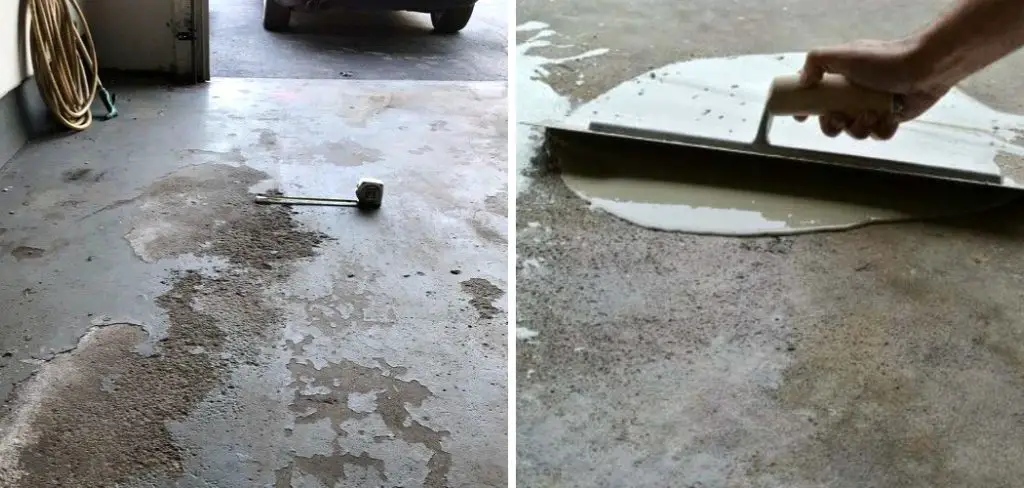
The main advantage of repairing pitted concrete garage floor is that it can save you a lot of money in the long run. If your garage floor is showing signs of pitting, it means that the surface has become damaged and needs repair. Not only does this affect the appearance of your garage, but it can also cause further damage if not addressed promptly. In this blog post, You will learn in detail how to repair pitted concrete garage floor.
Step-by-step Instructions for How to Repair Pitted Concrete Garage Floor
Step 1: Inspect the Damage
Start by thoroughly inspecting your concrete garage floor for any signs of pitting. Pits are small holes or depressions in the surface of the concrete that can vary in size and depth. They are usually caused by a combination of factors including age, wear and tear, and exposure to harsh chemicals or extreme temperatures.
Step 2: Gather Materials
To repair pitted concrete, you will need the following materials:
- Concrete patching compound
- Trowel
- Wire brush
- Broom or vacuum cleaner
- Protective gear (gloves, goggles, and mask)
Step 3: Clean the Floor
Using a wire brush, remove any loose debris and dirt from the pitted areas. Then, sweep or vacuum the entire garage floor to ensure it is free of any dust or particles. Follow the instructions on your chosen concrete patching compound and mix it thoroughly in a bucket. Some products may require water, while others are pre-mixed and ready to use.
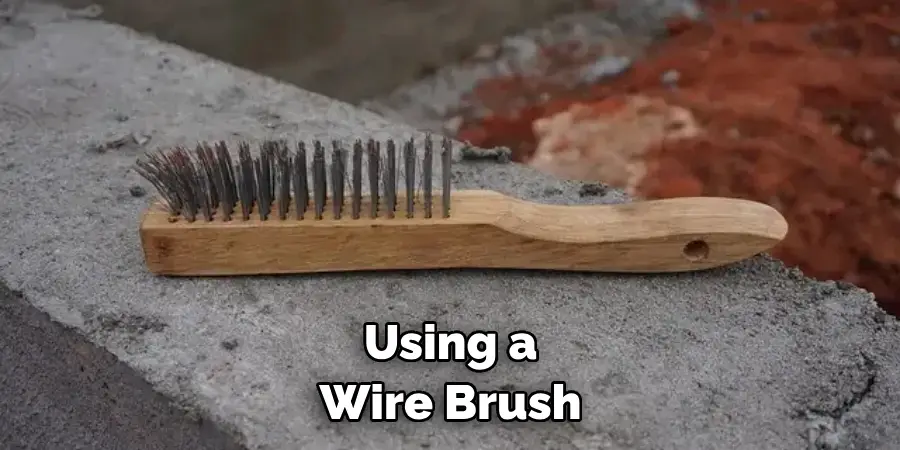
Step 4: Apply the Patching Compound
Using a trowel, carefully apply the patching compound to the pitted areas of your garage floor. Make sure to fill in all the holes and level out the surface as much as possible. Once you have applied the patching compound, use a trowel or straight edge tool to smooth out the surface. This will help create an even and level finish.
Step 5: Let it Cure
Follow the recommended curing time on your chosen patching compound. It is important to allow enough time for the compound to fully set and harden before moving on to the next step. After the patching compound has cured, use sandpaper or a concrete grinder to smooth out any rough patches or uneven areas on the surface of your garage floor.
Step 6: Clean Up
Using a broom or vacuum cleaner, remove any dust or debris from the repaired areas. This will ensure a clean and smooth finish for your concrete garage floor. To prevent future damage and protect your newly repaired garage floor, consider applying a sealant or concrete coating. This will help to fill in any remaining imperfections and provide an extra layer of protection.
To prevent pitting in the future, it is important to regularly clean and maintain your concrete garage floor. Sweep or vacuum regularly, avoid using harsh chemicals, and consider applying a sealant every few years to protect the surface. By following these steps, you can keep your garage floor looking smooth and new for years to come.
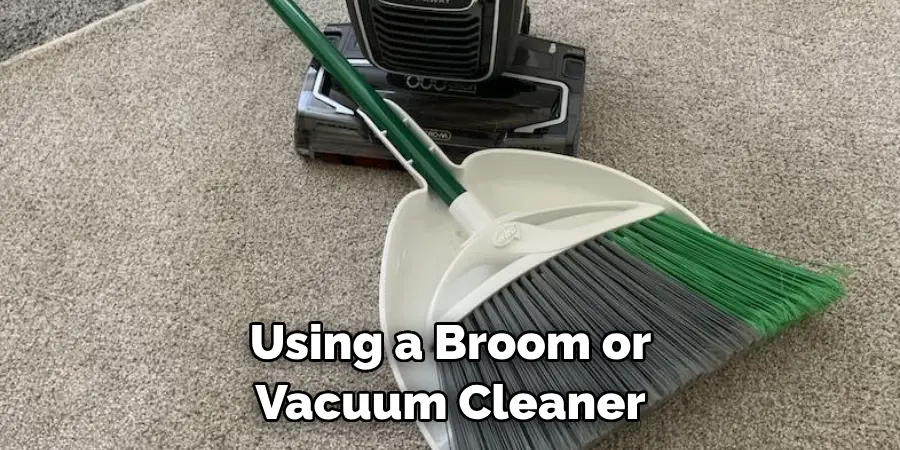
Precautions for How to Repair Pitted Concrete Garage Floor
- Wear protective gear, such as goggles, gloves and a dust mask to protect yourself from debris and dust when working on your garage floor.
- Make sure there is proper ventilation in the garage to avoid buildup of harmful fumes and chemicals during the repair process.
- Use caution when handling tools and equipment, especially power tools, to prevent any accidents or injuries.
- Keep children and pets away from the work area to ensure their safety and avoid any distractions while you are working.
- Read and follow all instructions carefully when using any repair products or materials to ensure safe and proper usage.
- Before starting the repair process, make sure the surface is clean and free of any debris or objects that may cause harm.
- Have a first aid kit readily available in case of any accidents or injuries.
By following these safety tips and precautions, you can ensure a safer repair process for your pitted concrete garage floor. Remember to always prioritize your safety and take necessary precautions while working on any DIY project.
What Causes Pitted Concrete on a Garage Floor?
One common issue with concrete garage floors is pitting, which refers to small indentations or holes on the surface of the concrete. These pits can range in size and depth, but regardless of their severity, they can be unsightly and even pose a safety hazard. There are several reasons why your garage floor may develop pits over time. Below are some of the most common causes:
- Poor Concrete Mix: If the concrete used for your garage floor was not properly mixed, it can lead to weak spots and pitting.
- Excessive Water Exposure: When concrete is exposed to high levels of moisture over time, it can weaken and eventually develop pits.
- Freeze-thaw Cycle: In areas with cold climates, the repeated freezing and thawing of water on the surface of concrete can cause pitting.
- Chemical Damage: Certain chemicals, such as road salt or harsh cleaning products, can eat away at the surface of concrete and create pits.
- Heavy vehicles: The weight of heavy vehicles, such as cars or trucks, can put pressure on the concrete and cause it to crack and pit.
By understanding the causes of pitted concrete, you can take preventative measures to avoid this issue in the future. However, if your garage floor is already showing signs of pitting, don’t worry! There are ways to repair and restore it.
Is There a DIY Solution for Repairing Pitted Concrete?
Yes, there are DIY solutions for repairing pitted concrete on a garage floor. However, it is important to note that the severity of the pits will determine the best course of action. For small and shallow pits, you can try using a concrete patching compound to fill in the gaps and create a smooth surface. This can be purchased at most hardware or home improvement stores and typically comes in a simple application tube.
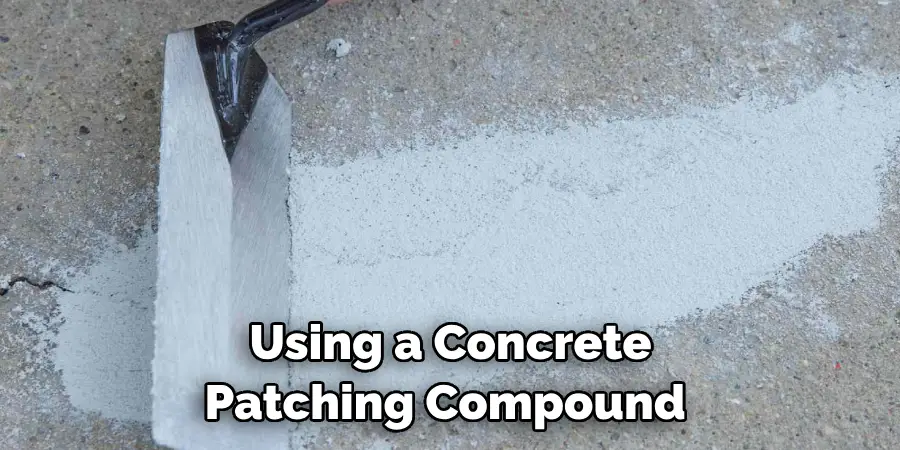
If the pits are larger or deeper, you may need to use a more intensive method such as resurfacing. This involves using a thin layer of concrete mix to cover the entire surface of the garage floor and create a new, smooth top layer. While this can be done by experienced DIYers, it is best to consult with a professional to ensure proper application and results.
Are There Any Long-term Solutions for Preventing Pitted Concrete From Forming on a Garage Floor?
Pitted concrete is a common issue that affects many garage floors. The formation of pits, also known as spalling, can occur due to several reasons such as moisture exposure, freeze-thaw cycles, or poor installation. Whatever the cause may be, pitted concrete not only looks unsightly but can also lead to further damage if left untreated.
While there are various short-term solutions to repair pitted concrete, such as patching or resurfacing, many homeowners are looking for long-term solutions that can prevent the formation of pits in the first place. In this section, we will discuss some effective measures that can help prevent pitted concrete from forming on a garage floor.
1. Proper Installation
One of the main causes of pitted concrete is improper installation. If the concrete is not mixed, poured, and leveled correctly, it can lead to weak spots and air pockets that can eventually result in pitting. Therefore, it is crucial to hire a professional contractor with experience in installing concrete floors. They will ensure that the base is properly compacted and the concrete is mixed and poured correctly.
2. Quality Sealant
Applying a quality sealant can also help prevent pitted concrete from forming. Sealants are designed to protect the concrete surface from moisture, chemicals, and other external factors that can cause damage. Before applying a sealant, make sure to thoroughly clean and dry the surface. Then, follow the manufacturer’s instructions for application and reapply as needed.

3. Proper Drainage
Excessive moisture is one of the main culprits behind pitted concrete. If water accumulates on the garage floor, it can seep into the concrete and cause damage over time. Therefore, ensuring proper drainage around the garage area is essential for preventing pitting. This can be achieved by installing a French drain or directing downspouts away from the garage.
4. Regular Maintenance
Even with proper installation and preventative measures, garage floors are still prone to wear and tear over time. Therefore, regular maintenance is necessary to keep the surface in good condition and prevent pitting. This includes cleaning up spills immediately, keeping the floor free of debris, and avoiding heavy equipment or vehicles on the surface.
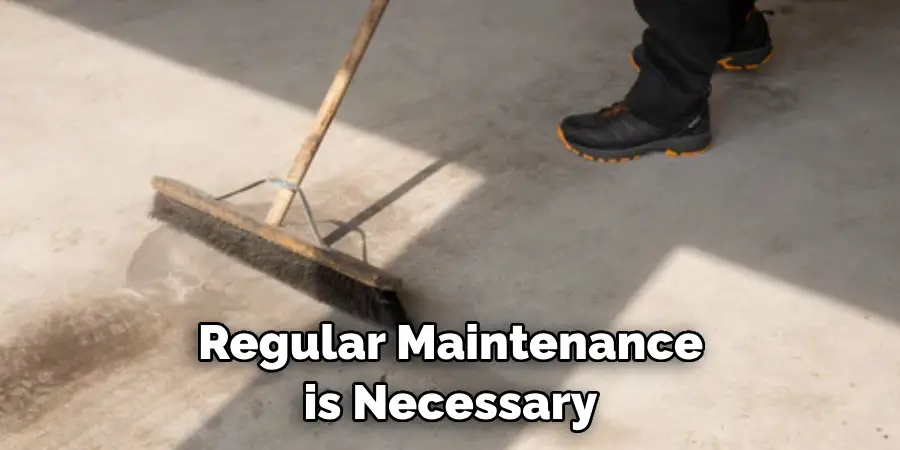
Can Pitted Concrete Be Repaired?
Pitted concrete is a common issue that many homeowners face, especially when it comes to their garage floors. Over time, the surface of the concrete can become rough and uneven due to wear and tear from vehicles and other heavy objects.
This can not only be unsightly but also pose safety hazards for those walking or driving on the surface.
The good news is that pitted concrete can be repaired, restoring the functionality and appearance of your garage floor. In this guide, we will walk you through the steps on repairing pitted concrete garage floors.
1. Preparing for Repair
Before starting any repair work, it is important to thoroughly clean the surface of your garage floor. Use a pressure washer or scrub brush to remove any dirt, debris, or loose concrete. This will ensure that the repair materials can properly adhere to the surface.
Next, fill any large holes or cracks using a concrete patching compound. Follow the manufacturer’s instructions for mixing and application. Once the patch has dried, use a grinder or sander to smooth out any uneven areas, making sure the surface is level and free of debris.
2. Selecting the Right Repair Material
When it comes to repairing pitted concrete, there are a variety of materials available. The type you choose will depend on the severity and depth of the pits, as well as your budget and personal preferences.
One option is using a polyurethane-based product that can be applied with a trowel or putty knife.
This type of material is ideal for shallow pits and can be sanded down once dry to achieve a smooth surface.
For deeper pits, you may need an epoxy-based product that can withstand heavy traffic and provide a more durable repair. These materials typically come in two parts that need to be mixed together before use.
3. Repairing the Pits
Now that you have your repair material selected, it’s time to start filling in the pits. Using a trowel or putty knife, apply a thin layer of the material over the pitted areas, making sure to fill in all crevices and holes. Depending on the product, you may need to work quickly as some materials dry fast.
Once applied, use a finishing tool such as a steel trowel or squeegee to smooth out the surface and remove any excess material. This will help create a seamless transition between the repaired areas and the rest of the floor.

Allow the repair material to dry completely before walking or driving on it, following the manufacturer’s recommended drying time. Once dry, you can sand down any rough spots and apply a sealant for added protection and a polished finish.
4. Preventing Future Pits
To prevent pitted concrete in the future, it’s important to properly maintain your garage floor. Regularly cleaning and sealing the surface can help protect it from damage and extend its lifespan. If you notice any small pits forming, address them promptly before they become larger issues.
By following these steps, you can restore the functionality and appearance of your garage floor and prevent future damage. Remember to always follow safety precautions when working with concrete repair materials and seek professional help if needed. With proper maintenance, your garage floor can remain smooth and safe for years to come.
Conclusion
In conclusion, repairing a pitted concrete garage floor is not as daunting as it may seem. With the right tools, materials, and techniques, you can restore your garage floor to its former state in no time. This will ensure that the repair material adheres properly to the surface.
Next, you can use a concrete patching compound to fill in the pits and level out the surface. It’s important to follow the instructions on the product label carefully to ensure proper application.
Once the repair material has dried, you can sand down any excess or uneven areas and clean up any residue. This will provide a smooth finish that is ready for sealing.
Applying a high-quality concrete sealer will not only protect the repaired area but also prevent future pitting. I hope this article has been beneficial for learning how to repair pitted concrete garage floor. Make Sure the precautionary measures are followed chronologically.
